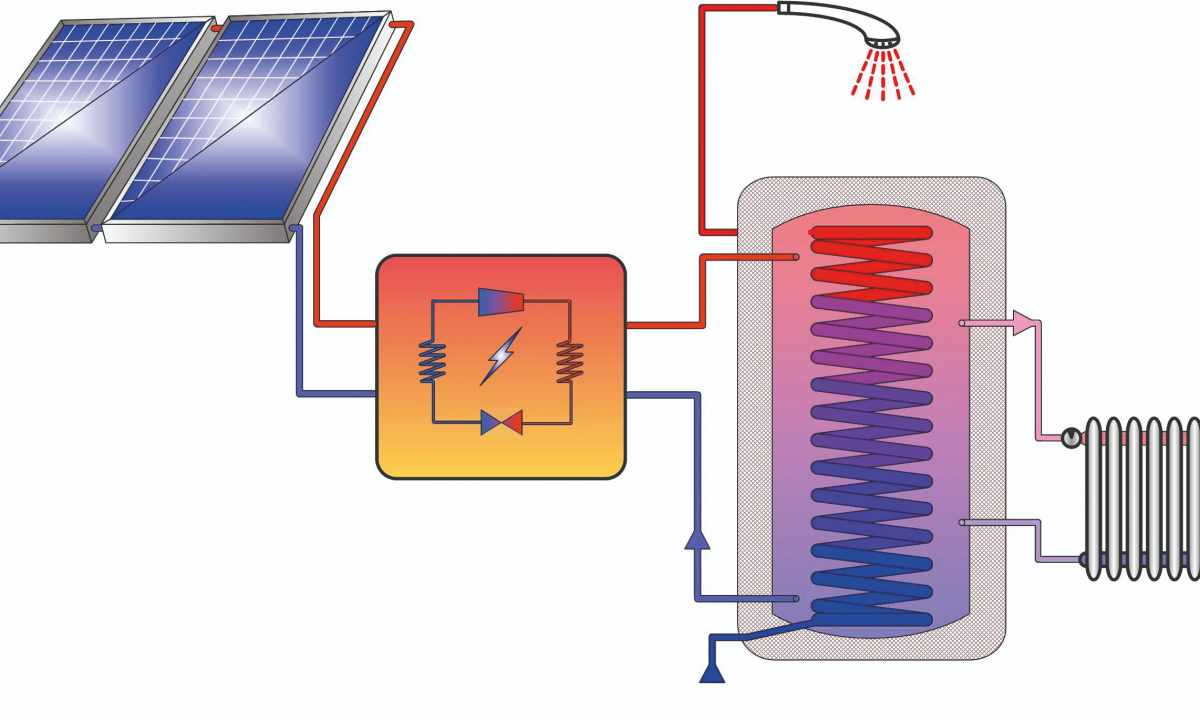The cost of operation of traditional sources of heat – the heaters, boilers working at different types of fuel and so forth - increases every year, the usual comfort – hot water and heating - becomes more expensive. Owners of apartments and especially owner-occupied dwellings are anxious with how to reduce expenses, but so far they manage it a little. And the alternative is, and it is called – the heat pump.
The heat pump is vapor-compression installation which transfers heat from cold, low-potential sources of heat to hot, high-potential. Heat is transferred due to condensation and evaporation of coolant as which the freon circulating on the closed contour is most often used. The electric power from which the heat pump works is spent only for this compulsory circulation.
The principle of operation of the heat pump is based on so-called cycle of Carnot who is perfectly familiar to you on operation of refrigeration units. Actually, the household refrigerator standing on your kitchen is also the heat pump. When you place in it products even if cold, but temperature of which after all is higher, than temperature in the camera of the fridge, on the law of energy conservation heat generated by them does not disappear anywhere. As temperature should not increase inside, heat is removed outside via the radiator grille, heating air in kitchen. The more products you place at the same time in the fridge, the more there will be heat emission.
The open fridge placed on the street which radiator is in the room will become the simplest version of the heat pump. But let the fridge fulfills the direct duties, there are already special devices - the heat pumps having efficiency are much higher. The principle of their action is rather simple.
Any heatpump consists of the evaporator, the condenser, the dilator lowering pressure and the compressor which pressure raises. All these devices are connected in one closed contour by the pipeline. On pipes coolant, inert gas with very low boiling temperature circulates therefore in one part of contour, cold, it represents liquid, and in the second, warm, it turns into gaseous state. The boiling point, as is well-known from physics, can change depending on pressure, here why the dilator and the compressor are necessary in this system. Let's assume that outside the heat carrier circulates on the pipes laid in the earth as it has low temperature, passing on them, it heats up, even when external temperature is all near 4-5os. Coming to the evaporator which performs function of the heat exchanger, the heat carrier gives the received heat to internal contour of system which is filled with coolant. Even this heat is enough that coolant has turned from liquid into gaseous state. Moving further, gas moves to the compressor where under the influence of high pressure contracts, and its temperature at the same time increases. Having become we heat, gas comes to the condenser which is also the heat exchanger. In it there is transfer of heat from hot gas to the heat carrier of the recirculating line entering the heating system of the house. Having given heat, gas is cooled and again turns into liquid state while the heated heat carrier comes to the hot water supply and heating. Passing through reducing valve of the dilator, liquefied gas gets to the evaporator again – the cycle becomes isolated.
In cold season the heat pumps work on heating at home, and during heat – on its cooling. In this case the principle of work the same, heat comes only in the summer to the heat carrier from internal rooms, but not outside.
Now the heat pumps having different designs are used. So, the pump with open cycle is used when the house is located near reservoir. In this case the heat carrier, water, comes to open contour, there passes all cycle and, being cooled, again merges in reservoir. Geothermal pumps of the closed type pump over the heat carrier – air or water, on the pipes put deeply to the earth and laid on reservoir bottom. The closed cycle in the ecological plan is considered safer. Pumps with the vertical and horizontal heat exchanger which are used when nearby there are no reservoirs belong to the closed type. Vertical heat pumps are used when the area of the parcel on which the house is located is small. Sometimes vertical pumps establish in the wells drilled nearby.
The complex of works on installation of the heat pump includes carrying out internal electric installation work, laying of the external pipeline and internal air ducts.
The economic benefit from use of heat pumps is obvious – their operation rather cheap manages as the electric power is spent slightly more, than during the operation of the fridge. The price of the equipment is also low, as well as the cost of mounting and installation. Use of the heat pump, allows to get rid of cares of acquisition and storage of fuel resources, installation and operation of the heating equipment, at you in the house additional rooms in which the boiler house was located earlier are freed.

